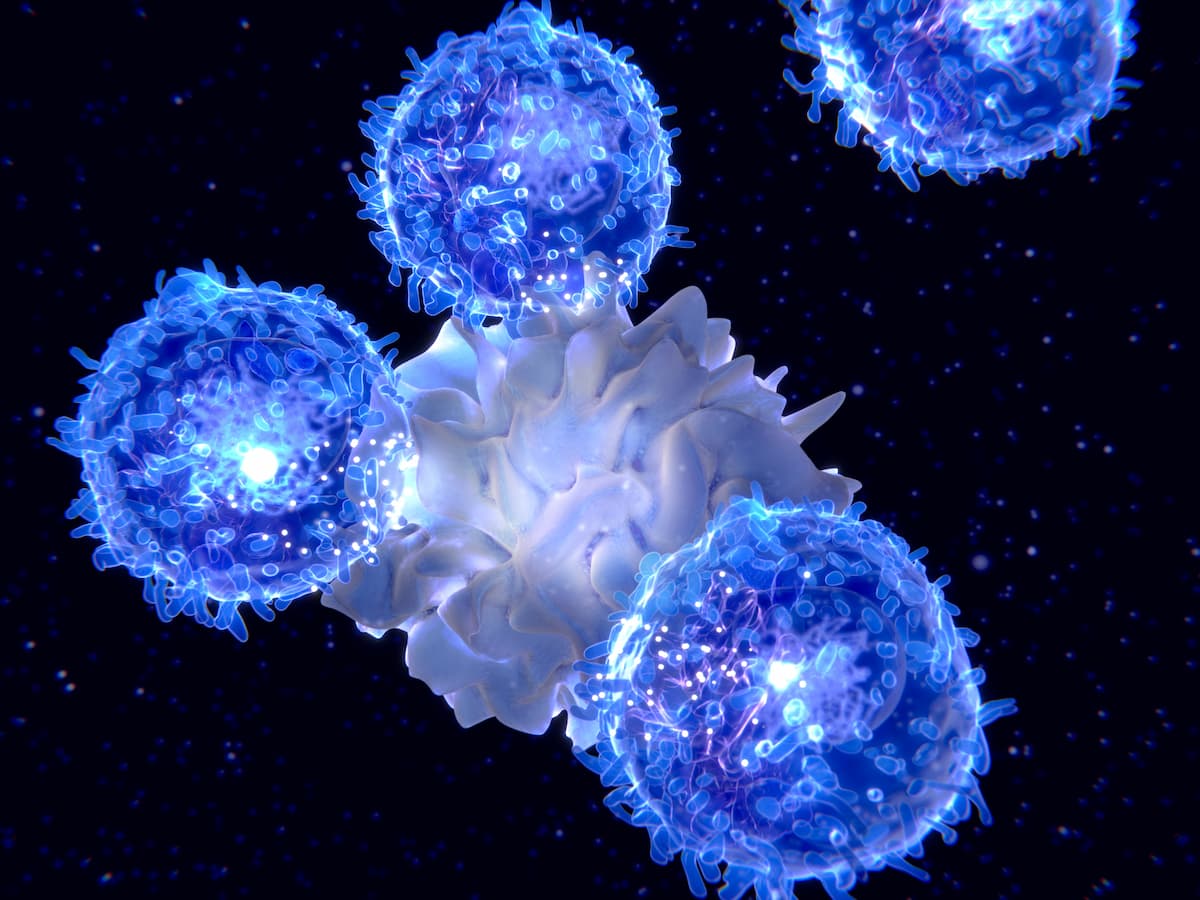Bortezomib Regimen Yields Responses in B-Cell Marginal Zone Lymphoma
A frontline treatment regimen including bortezomib and rituximab appears to be well tolerated among patients with B-cell non-Hodgkin marginal zone lymphoma in a phase 2 study.
“VR-CAP first-line treatment of lymphoma in the marginal region has a good effect…and well tolerated," according to the authors of a phase 2 study (NCT04433156).

Efficacy and tolerability were reported in patients with B-cell non-Hodgkin marginal zone lymphoma (MZL) treated with frontline bortezomib (Velcade), rituximab (Rituxan), cyclophosphamide, doxorubicin hydrochloride, prednisone, and cytarabine hydrochloride (VR-CAP), according to findings from a phase 2 study (NCT04433156) during the 2023 European Society for Medical Oncology Congress (ESMO).
Junfeng Chu, MD, and coauthors reported that the objective response rate in patients treated with VR-CAP was 95.5%. Additionally, toxicity mainly consisted of grade 1 and 2 adverse effects (AEs).
As of February 2023, 15 patients completed the cumulative 6 course treatment, 6 patients completed 4 courses of the total 6, and 2 discontinued the treatment of their own accord. In 22 patients, a curative effect could be evaluated. Among the 22 patients, 16 (72.7%) experienced either a complete response (CR) or unconfirmed complete response (CRu) and 5 patients (22.7%) experienced a partial response. After 2 years of treatment, the progression-free survival was 82.2% and the overall response was 82.0%, respectively.
“The primary end point was 2-year progression-free survival and the secondary end point was objective response rate, including complete response and partial response; total survival and security,” investigators wrote in the poster. “VR-CAP first-line treatment of lymphoma in the marginal region has a good effect…and well tolerated.”
The single arm, multi-center study evaluated 23 patients with a median age of 55 years (range, 25-74). Eighteen patients (78%) were under 60 years of age and 5 patients (22%) were 60 years or older. The male to female ratio was 14 to 9. Of the 23 patients, most (65%) had stage III or IV B-cell non-Hodgkin MZL (65%) and 35% of patients had stage I or II.
Eleven (47.8%) patients had a Follicular Lymphoma International Prognostic Index (FLIPI) of 0 to 1; 10 patients (43.5%) had a FLIPI score of 2 to 3, and 2 patients (8.7%) had a FLIPI score of 4. Turning to FLIPI-2 scores, 8 patients (34.8%) had a score of 0 to 1, 13 patients (56.5%) had a score of 2 to 2, and 2 patients (8.7%) had a score of 2.
Among the 23 patients, 2 patients (8.7%) experienced B symptoms while undergoing treatment compared with 21 patients (91.3%) who did not.
Patients receiving the full 6 treatment cycles showed a complete response (CR) of 66.7% and a partial response (PR) of 33.3%. Patients receiving four cycles of treatment had a CR of 33.3% and a PR of 57.1%. Additionally, patients who received 4 cycles of treatment reported 4.8% disease progression (PD) as well as 4.8% stable disease (SD). Among patients treated for 2 cycles, investigators reported a PR of 68.2%, a CR of 27.3%, and SD of 4.5%.
The first-line treatment comprised 6 cycles with each cycle lasting for 3 weeks. On the 0th day of the treatment cycle, a 375 mg/m2 dose of rituximab was given intravenously, as well as a 750 mg/m2 dose of cyclophosphamide, and a 70 mg/m2 dose of epirubicin (Ellence). On the first and fourth days, a 1.3 mg/m2 dose of bortezomib was given subcutaneously, and on the first and fifth day a 100 mg dose of prednisone was given orally.
The most common grade 1 or 2 AE experienced by 13 patients who completed the 6 courses of treatment were anemia (73.9%), gastrointestinal reaction (52.2%), thrombocytopenia (30.4%), pulmonary infection (21.7%, with 4.3% having grade 3 or 4), neurotoxicity (87%), and rituximab-related rash (8.7%).
For some patients with B-cell non-Hodgkin MZL, it can be difficult to achieve a complete remission with the standard treatment and many patients can relapse quickly. Thenuclear factor kappa B (NF-κB)signaling pathway is overly active. Bortezomib, works as a proteasome inhibitor interfering with the NF-κBpathway. This interference with the NF-κB pathway is one of the mechanisms through which bortezomib may exert its therapeutic effects in MZL.
The authors declared no conflict-of-interest disclosures.
Reference
Chu J, Wang H, Yao S, et al. Phase II clinical study of VR-CAP regimen for first-line treatment of marginal zone lymphoma. Presented at: 2023 ESMO Congress. October 20 -24, 2023. Madrid, Spain. Abstract 834P.